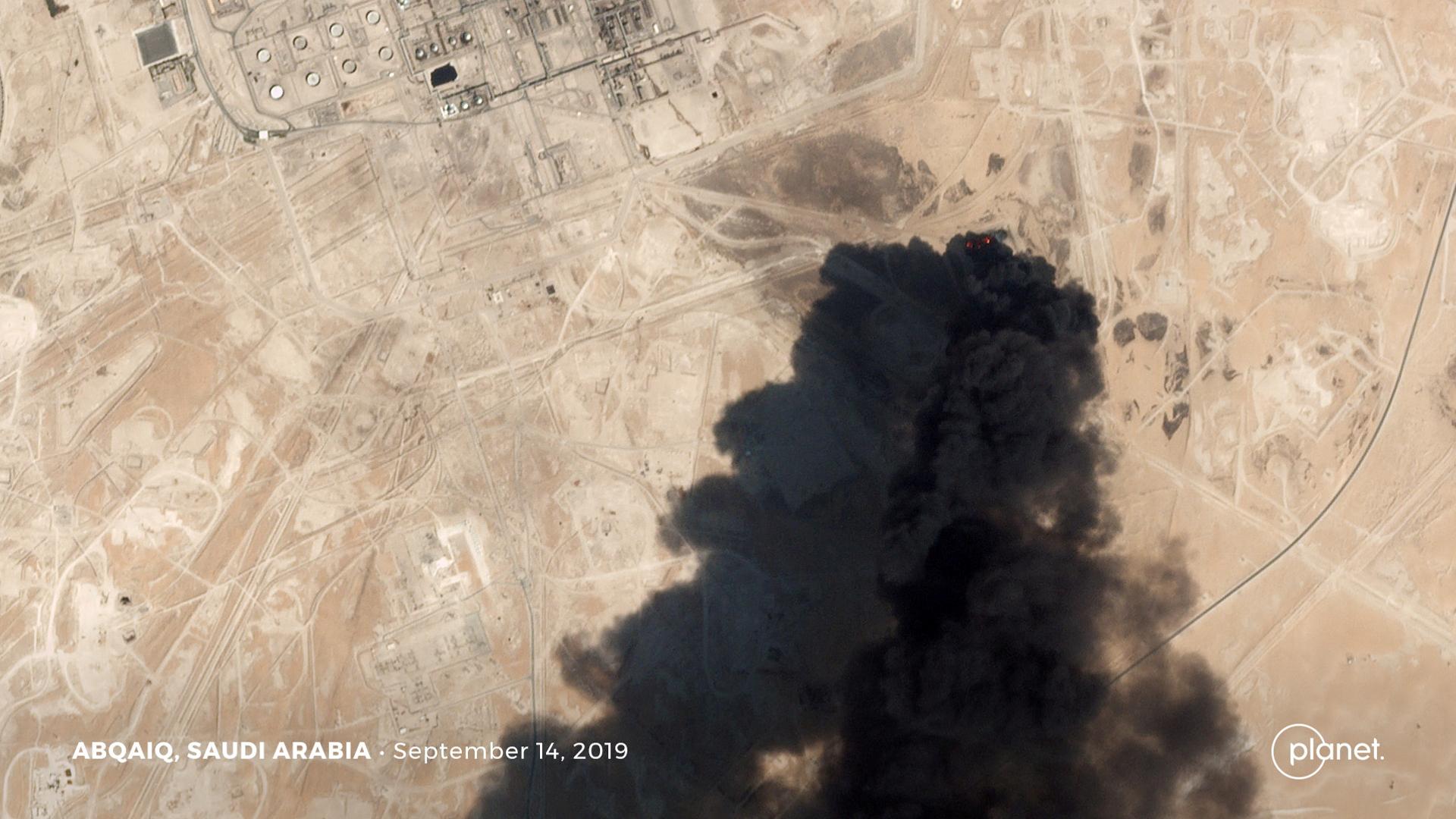Donald Trump cannot drag the US into another war ahead of an election and Iran is suffering from a crumbling economy and an increasingly frustrated populace.
The world was shocked this weekend as a major attack on Saudi Arabia’s largest oil facilities in Khurais and Abqaiq led to a daily loss of 5.7 million barrels of crude – the equivalent of 5 percent of the global crude supply.
Crude prices spiked to 30-year highs in the in early hours of trading on Monday, with the international benchmark, Brent crude oil, trading as high as $71.95 a barrel (near 20 percent increase) and the US West Texas Intermediate peaking as high as $63.34 a barrel (over 15 percent increase) before settling at lower prices.
Soon after the strikes that disrupted the Saudi oil supply by over 50 percent, the Houthis in Yemen—who have been fighting the Saudi-led coalition for the five years—claimed responsibility for the attacks.
US Secretary of State Mike Pompeo rushed to blame Iran for the attacks without providing any evidence, Foreign Minister Javad Zarif rejected the allegations on Twitter saying that Pompeo’s failed “max pressure” is turning to “max deceit.”
Iran’s Foreign Ministry Spokesman Abbas Mousavi also reacted to Pompeo’s comments saying that “such fruitless and blind accusations and remarks are incomprehensible and meaningless.”
In Iran, Saturday’s attack—which according to Bloomberg is considered the largest disruption to global crude supply in history—made headlines in nearly all major newspapers and news agencies.
Most Iranian media covered the details of the damage and international reactions to the attacks and some described it as a turning point in the fate of the five-years long Saudi war in Yemen. Others praised the growing military power of the ‘resistance movements’ across Yemen, Lebanon, Syria and Iraq.
Kayhan, known as the most conservative Iranian newspaper close to the Iranian Supreme Leader Ayatollah Ali Khamenei, dedicated its top story to the Aramco attacks with the headline: “The Saudi Backbone Broke”. It added that attacks by the Houthis will not only increase the price of oil but will pose a major challenge to the Saudi Crown Prince Mohammed bin Salman’s ‘Vision 2030’ which contains a plan to publicly list the company.
JavanDaily, another ultraconservative newspaper in Iran dedicated its front page to the attacks which it said has put the White House in “turmoil”. According to Javan, attempts by US officials like Secretary Mike Pompeo, who have accused Iran of the attack against Saudi oil facilities, are in fact, a clear indication of the “risk” the attacks have posed to “US interests, let alone Saudi interests.”
The Iran Daily—the official newspaper of the Iranian government—focused its report mainly on the economic consequences of the attack by asking if the global price of oil was ready to spike and focused on attempts by the US to use their strategic oil reserves as a means to control the international price of oil.
Posted on his Twitter page, US President Donald Trump initially said the US is “locked and loaded” and is “waiting to hear” from Riyadh about who attacked its oil facilities.
Later, during his meeting with the Bahraini Crown Prince at the Oval Office, Trump expressed that although it “certainly” looks like Iran was behind the Aramco attacks, but then added that “I don’t want war with anybody.”
Trump’s reaction to Saturday’s attacks was similar to his previous reaction back in June when the Iranian Revolutionary Guards Corps (IRGC) announced that it had shot down an American spy drone over its territorial waters. President Trump reacted then by tweeting that Iran has made a “very bad mistake” before later downplaying the move as a “possible mistake.”
With the sacking of John Bolton as his National Security Advisor last week, Trump’s reaction towards the latest drone attacks of Iran-ally Houthis can be seen as a modest response which would not only appease the anti-Iran camp in Washington and Saudis in Riyadh, but it would keep alive the notion of a possible meeting with Iranian President Hassan Rouhani during the upcoming UN General Assembly. Both Washington and Tehran have ruled out plans for a potential meeting between the two presidents.
Despite international concerns over a possible military confrontation between the US or its regional allies with Iran, war does not seem viable at this time.
With just over a year until the next presidential election in the US, Donald Trump would not be interested in dragging the country into a new military conflict. It is hard to imagine any military action from Washington and sanctions will likely continue to be the weapon of choice for the US.
Keeping in mind the price of crude oil and its relationship with conflict in the region, it seems like Saudi Arabia and the US are looking to manage and cool the situation.
Now Tehran has been hit hard by US sanctions. The economy is crumbling and frustration and anger are building among regular Iranians. An all-out military confrontation with the US, or other regional foes, doesn’t seem to be a viable option for the Iranian government either.
Author: Maysam Bizaer
Maysam Bizaer is an Iranian political and economic writer and analyst. He has worked for various Iranian media and has been a contributor to several foreign media outlets.
Source










Discussion about this post